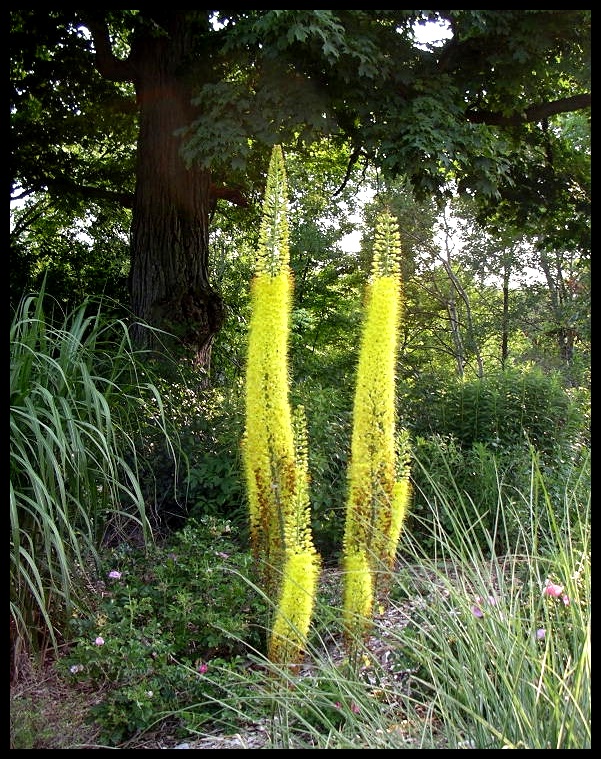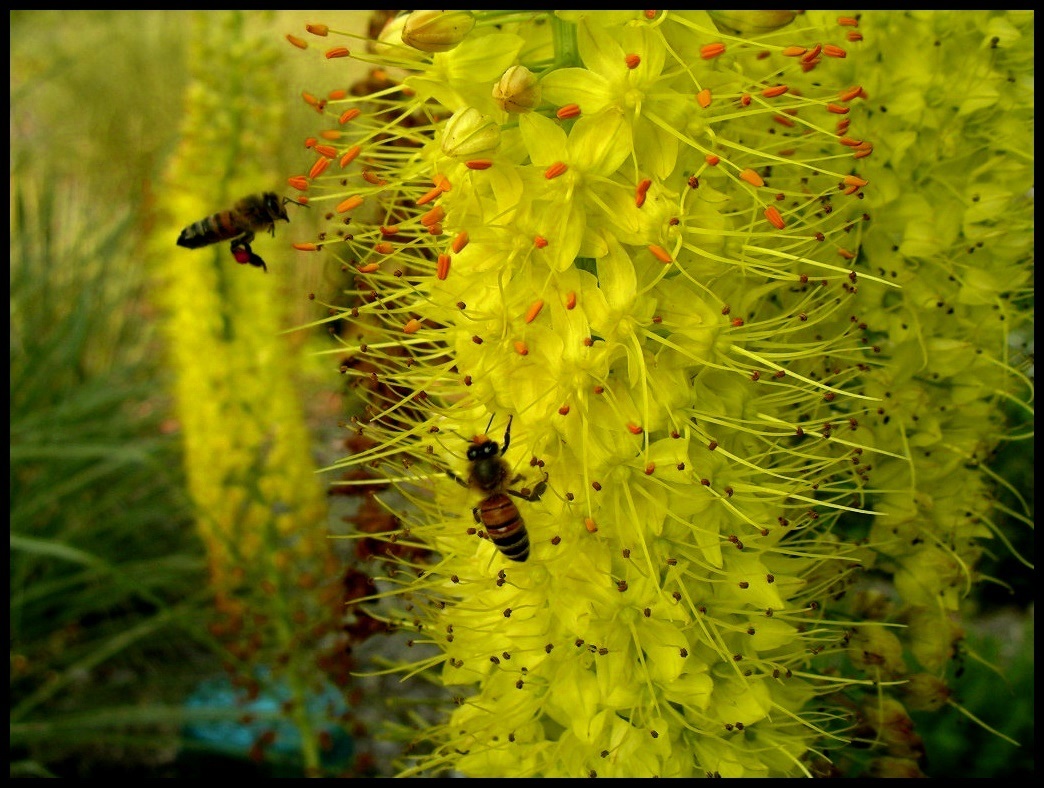Plant of the Month for March, 2014

(er-EE-mur-us sten-oh-FIL-us)
General Information:
A real special plant with mixed up names. Many people call this plant Eremurus bungei, but the correct name is E. stenophyllus.

Eremurus stenophyllus; photo by Robert Pavlis
I first purchased this plant as a tuber. Knowing that the tuber rots easily, I planted it on a bed of sand in fall and never saw it again. I then decided to try growing it from seed which worked much better. The clump in the picture is about 4 years old, and it’s getting bigger every year. A few self-seeded plants can be seen at its base.
Also known as Foxtail Lily and Desert Candle, it blooms for several weeks as successive buds open from the bottom to the top. At a height of 120 cm, it makes quite a statement in the garden.

Eremurus stenophyllus; photo by Robert Pavlis
It is native to Central Asia where it grows in dry mountainous areas. It likes to have good drainage and lots of sun. The tuber look like a star fish and is quite fragile. After flowering the plant look a bit ragged and it is therefore best to place this plant behind other plants that will cover the old foliage in late summer. Don’t divide or move the plant unless it is absolutely necessary. When planting a tuber, set the crown of the tuber 10 cm below the soil level.
The pictured plants are a bright yellow fading to a less bright yellow. Some references suggest that they fade to an orange colour and it is possible that this only happens in some hybrids. I believe the pure species stays yellow.
Life Cycle: perennial
Height: 120 cm (4ft)
Bloom Time: mid-summer
Natural Range: Central Asia, Iran, Persia
Habitat: dry rocky mountains
Synonyms: Ammolirion stenophyllum, Eremurus bungei, E. stenophyllus var. bungei, E. stenophyllus subsp. stenophyllus, Henningia stenophylla
Cultivation:
Light: full sun
Soil: well drained
Water: regular moisture in spring, dry after flowering, especially in winter
USDA Hardiness Zone: 5– 9
Propagation: seed, division
Seedex availability (ORG&HPS annual Seed Exchange): usually
Give sown seeds several weeks @ 20°C to imbibe water (perhaps even germinate!), then expose to fluctuating outdoor winter temperatures including freezing for 3 months. Gradually increase light and temperature in spring. See https://www.youtube.com/watch?v=SO_KKbGYTEM
